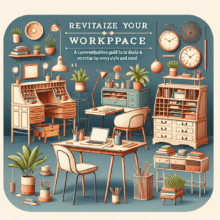



Introduction to Lighting Design
Lighting plays a crucial role in shaping our environments, significantly influencing mood, functionality, and aesthetics. Fixtures and sconces are integral components of lighting design, bridging the gap between functional illumination and artistic expression.
The Essence of Lighting
Lighting is not merely about ensuring visibility; it encompasses creating atmosphere, highlighting architectural features, and facilitating tasks. Light can shift perceptions, guide behavior, and even dictate emotions.
Key Objectives of Lighting Design:
- Functionality: Provide adequate illumination suitable for various tasks.
- Aesthetics: Enhance the architectural beauty and interior decor.
- Psychological Impact: Create mood and ambience that can affect productivity and comfort.
Section 1: Understanding Fixtures
Definition and Types of Fixtures
Fixtures are devices that hold the bulbs and provide a structure for lighting to be installed. They come in various styles, and each has distinct properties and use-cases.
1.1 Ceiling Fixtures
Ceiling fixtures are mounted directly to the ceiling and include designs like chandeliers and flush mounts. Each type contributes differently to the overall design of a space.
- Chandeliers: Often extravagant, chandeliers draw attention and serve as a centerpiece.
- Flush Mounts: These are closer to the ceiling and are excellent for low-ceiling spaces while providing efficient light.
1.2 Wall Fixtures
Unlike ceiling fixtures, wall fixtures include sconces and wall-mounted lamps. They offer both functional and decorative lighting, ideal for corridors, staircases, and living areas.
- Sconces: These fixtures often are designed to be decorative as well as functional, serving as ambient or task lighting.
1.3 Table and Floor Fixtures
Table and floor lamps provide flexibility in placement and ease of mobility, making them excellent choices for various activities.
- Table Lamps: Perfect for reading, working, or enhancing decor, they can be found in various designs that complement different styles.
- Floor Lamps: These occupy floor space and can be used to highlight a specific area or as general lighting.
Real-Life Examples
-
In a modern Manhattan apartment, a sleek crystal chandelier is the defining element of the dining room, reflecting light across the entire space and adding elegance.
-
A cozy reading nook features a mid-century modern floor lamp, casting warm light and creating an inviting atmosphere.
Q&A Section
-
Q: How do you choose a fixture for a specific room?
A: Consider the room’s purpose, size, and existing decor. Match the fixture style with the overall aesthetics of the space. -
Q: What are the benefits of energy-efficient fixtures?
A: Energy-efficient fixtures consume less electricity, leading to lower utility bills and reduced environmental impact.
Section 2: The Role of Sconces
Definition and Types of Sconces
Sconces are wall-mounted fixtures that can enhance both form and function.
2.1 Types of Sconces
- Upward Sconces: Illuminate the wall and create a glow above, ideal for ambient lighting.
- Downward Sconces: Focus light downward, which can be useful for task lighting over art or furniture.
- Adjustable Sconces: These can be redirected to highlight specific areas, providing flexibility in light direction.
Functionality and Placement
Placement of sconces is critical to maximizing their impact.
- Entryways: Sconces can frame doorways or illuminate narrow hallways, guiding guests through spaces.
- Living Rooms: The strategic placement of sconces beside artwork or mirrors can elevate decor while providing layered lighting.
Case Study: Restaurant Ambience
At a renowned restaurant in Chicago, a combination of downward and upward sconces is used to create texture on brick walls while providing an intimate dining atmosphere that fosters conversation.
Section 3: The Aesthetics of Lighting Design
Lighting Styles and Design Trends
The aesthetic aspect is where fixtures and sconces become more than mere functional devices.
3.1 Modern Design
Clean lines and minimalist approaches characterize modern design. Fixtures often feature simple geometries and neutral colors that resonate with contemporary tastes.
3.2 Vintage and Retro
Vintage styles celebrate previous eras, featuring ornate designs and elaborate detailing. These fixtures add a nostalgic touch and can be focal points in a room.
3.3 Eclectic Styles
Eclectic design allows for the mix of different styles, making spaces unique. The right fixture can act as an artistic piece, integrating various design elements armoniously.
Design Integration
Effective lighting design requires careful integration of fixtures and sconces into the broader architectural elements.
-
Layering Light: Combine ambient, task, and accent lighting using various fixtures to create depth and interest in any space.
-
Color Temperature: Choosing the right temperature—warm, cool, or daylight—can significantly alter perception and comfort levels in a space.
Q&A Section
-
Q: How can I create layered lighting in my home?
A: Utilize a mix of ambient lights (like ceiling fixtures), task lighting (like table lamps), and accent lights (sconces) to create a balanced atmosphere. -
Q: What colors are best for my fixtures?
A: Neutral colors are often versatile, but bold colors can make statement pieces. It depends on the surrounding decor.Top RatedAdjustable Mini Track Lights for Accent LightingVersatile solution for focused illumination.This mini adjustable track light allows for precise positioning, making it perfect for showcasing art or certain areas in your room. Compatible with E27 bulbs for easy customization.
Section 4: The Functionality of Fixtures and Sconces
Practical Aspects of Lighting
Beyond aesthetics, the functionality of fixtures and sconces is paramount for efficient lighting design.
4.1 Task Lighting
Task lighting focuses on specific activities and often includes adjustable fixtures like desk lamps or magnifying sconces.
4.2 Ambient Lighting
Ideal for creating an overall mood, ambient lighting is generally diffused and provides even illumination.
Considerations for Selection
When choosing fixtures, consider the following aspects:
- Brightness: Lumens indicate how bright a light feels. Choose based on space requirements.
- Energy Efficiency: Opt for LED options to minimize energy consumption while increasing lifespan.
- Control Options: Dimming capabilities offer flexibility and enhance mood.
Case Study: Home Office
In a well-designed home office, a combination of a bright overhead light and adjustable sconces provides both general and task lighting. These lights enhance productivity while reducing eye strain.
Section 5: Sustainability in Lighting Design
The Importance of Sustainability
Sustainability is increasingly important in the selection and design of fixtures and sconces.
5.1 Energy-Efficient Technologies
LEDs are revolutionizing lighting by offering long lifespans and lower energy usage compared to traditional incandescent bulbs.
5.2 Sustainable Materials
Using sustainable materials in the production of fixtures is also gaining traction. Look for products made from recycled metals or sustainably sourced woods.
Tips for Sustainable Implementation
-
Choose Energy Star-rated Products: Decreasing energy consumption with proper certifications can help reduce your carbon footprint.
-
Utilization of Natural Light: Incorporating daylight into your design reduces reliance on artificial lighting, making spaces brighter while promoting well-being.
Trending NowDimmable Star Ceiling Lamp for KidsAdjustable brightness and color temperatures.This creative ceiling lamp features a whimsical star and moon design, providing adjustable brightness and warmth to suit your child's room decor.
Q&A Section
-
Q: What constitutes an energy-efficient light fixture?
A: An energy-efficient fixture maximizes light output while minimizing energy consumption, often rated by organizations like Energy Star. -
Q: Can I retrofit my existing fixtures for energy efficiency?
A: Yes, many businesses offer LED retrofit kits that allow you to upgrade without replacing entire fixtures.
Section 6: Technical Advancements in Lighting Design
The Impact of Technology on Lighting
Recent advances are expanding the possibilities of lighting design through innovative technologies.
6.1 Smart Lighting
Smart lighting allows users to control fixtures via apps or voice, adjusting brightness, color, and schedules.
6.2 Integration with Home Automation
Fixtures can now be integrated into home automation systems—adjusting automatically in response to specific conditions.
Future Trends to Watch
As technology advances, expect to see:
- More Personalized Lighting Experiences: Options tailored to individual preferences.
- Enhanced Energy Monitoring: For real-time insights into energy consumption.
Case Study: Smart Home Integration
A family integrating smart lighting successfully managed their energy use, coordinating fixtures to align with their daily schedules and preference for ambient lighting in the evenings.
Section 7: Maintenance and Care
The Importance of Proper Maintenance
Proper care helps ensure longevity and performance for any fixture or sconce.
7.1 Cleaning Techniques
- Dust thoroughly: Regularly dust fixtures to prevent buildup that can diminish light quality.
- Avoid Harsh Chemicals: Use mild soap and water, as harsh cleaners can damage finishes.
7.2 Bulb Replacement and Upgrades
- Always replace bulbs with similar types to maintain performance and light quality.
- Consider upgrading to energy-efficient options to improve efficiency.
Q&A Section
-
Q: How often should I clean my fixtures?
A: It is recommended to clean fixtures every three months to maintain optimal brightness and function. -
Q: What should I consider when replacing bulbs?
A: Pay attention to wattage and type to ensure compatibility with your fixtures.
Section 8: The Future of Lighting Design
Emerging Trends
The world of lighting design is ever-evolving, and new trends are continually shaping its future.
8.1 Customization
Consumers increasingly desire customization options, whether in style, finish, or functionality.
8.2 Sustainable Innovations
The drive towards sustainability continues to chart the course for future designs, emphasizing eco-friendly products and processes.
The Role of Designers
Lighting designers will play a central role in creating spaces that enhance both functionality and aesthetics, marrying technology and creativity.
Q&A Section
-
Q: Where do I see lighting design heading in the future?
A: There’s a likelihood of increased use of smart technologies and sustainable practices across various type of settings. -
Q: How can I become involved in lighting design?
A: Consider courses in architecture or interior design focused on lighting elements or seek mentorship in the field.
Conclusion
In summary, fixtures and sconces are not only essential for functionality but are key players in the broader narrative of design. Understanding their roles, styles, and technological advancements allows for a more profound appreciation of how they transform spaces. As we move into a world increasingly focused on sustainability, the adaptations within this niche will undoubtedly continue to evolve. Designers and homeowners alike are encouraged to stay abreast of innovations and emerging trends to make informed choices that suit their personal or professional spaces.
Disclaimer
This article is produced by A.I. for informational purposes. Though efforts have been made to ensure the accuracy of the content, please consult professionals for specific advice tailored to your needs.
Resources Table
| Source | Description | Link |
|---|---|---|
| Energy Star | Information on energy-efficient products and ratings | Energy Star |
| Lighting Research Center | Research on lighting technologies and design | Lighting Research Center |
| IES (Illuminating Engineering Society) | Standards and guidelines in lighting | IES |
| Houzz | Inspiration for home design and lighting | Houzz |
| Home Lighting | Tips and guides for home lighting design | Home Lighting |
This comprehensive overview of fixtures and sconces illuminates their significance within the world of lighting design. Each section is carefully crafted to provide insights that are both practical and engaging, encouraging readers to explore the fascinating intersection of light, design, and function.









